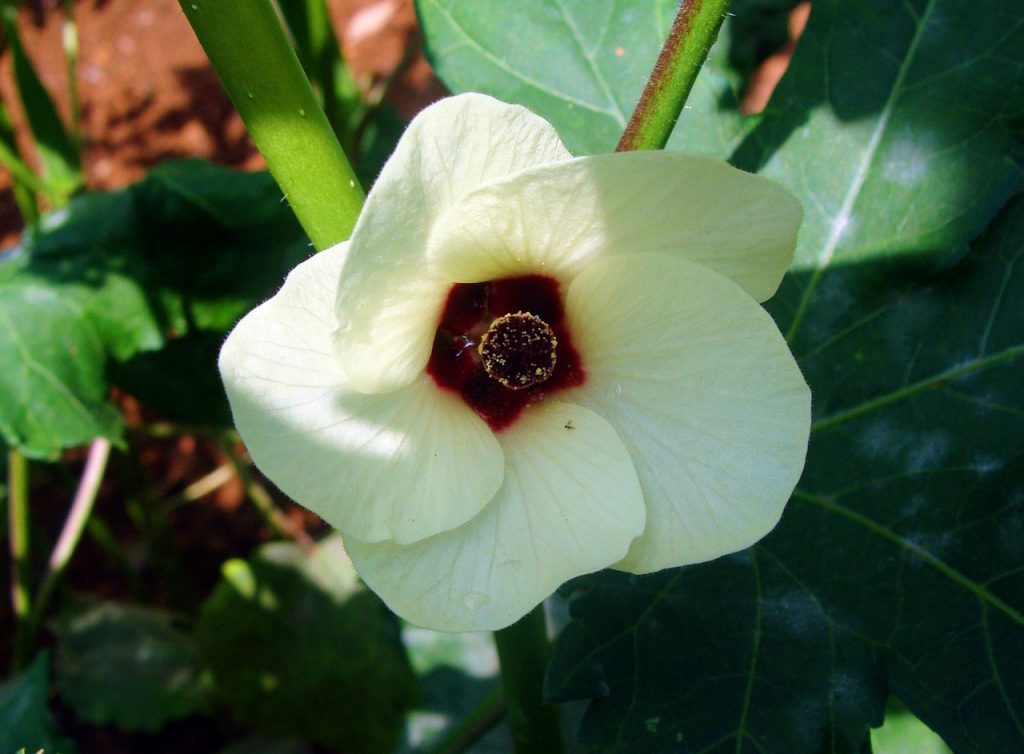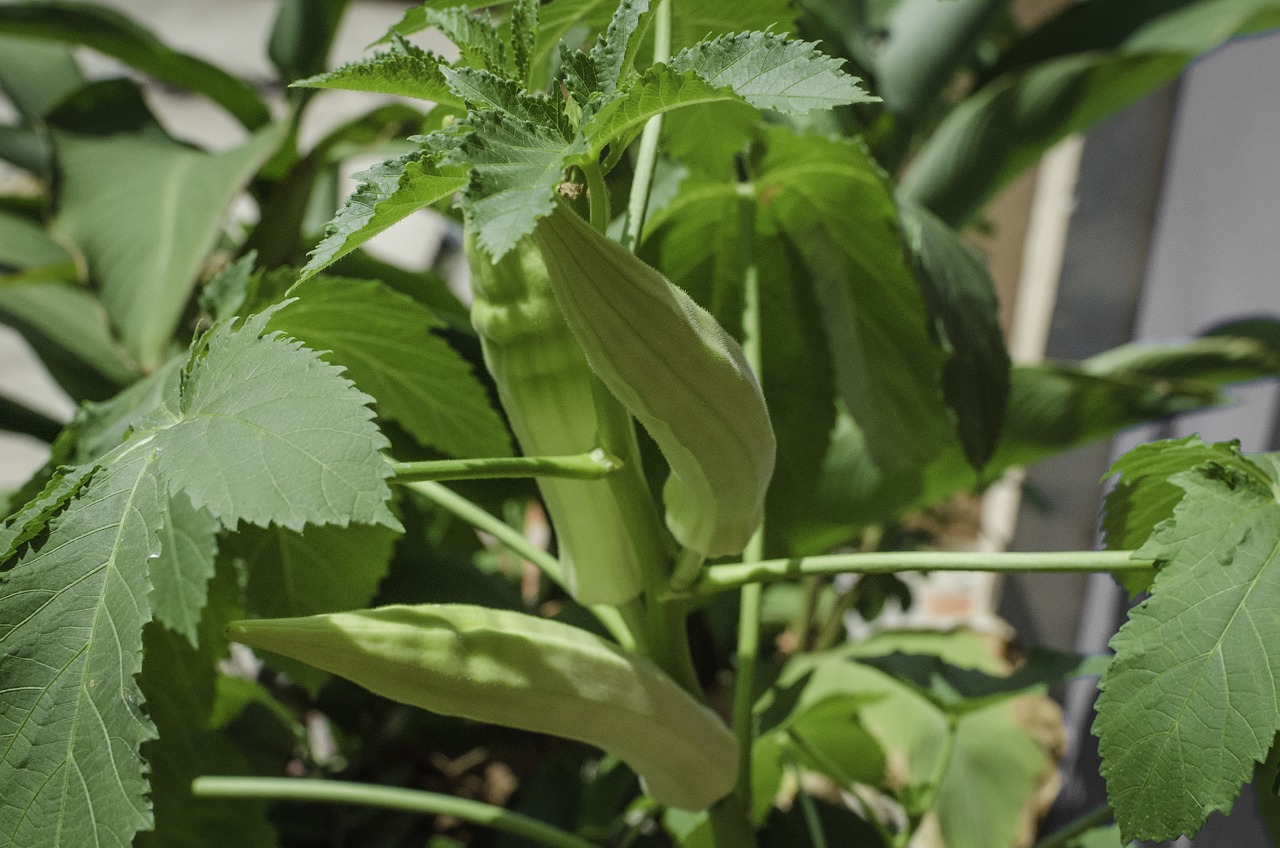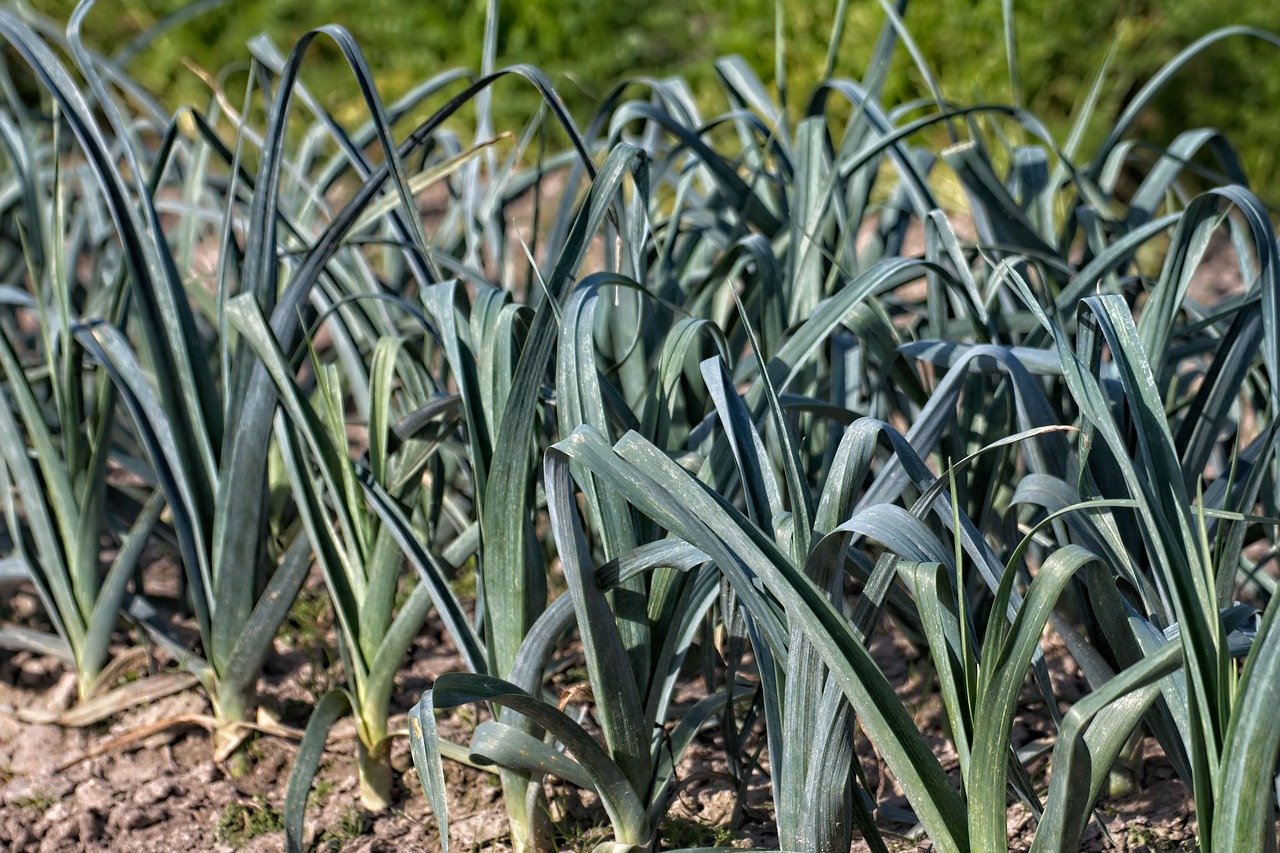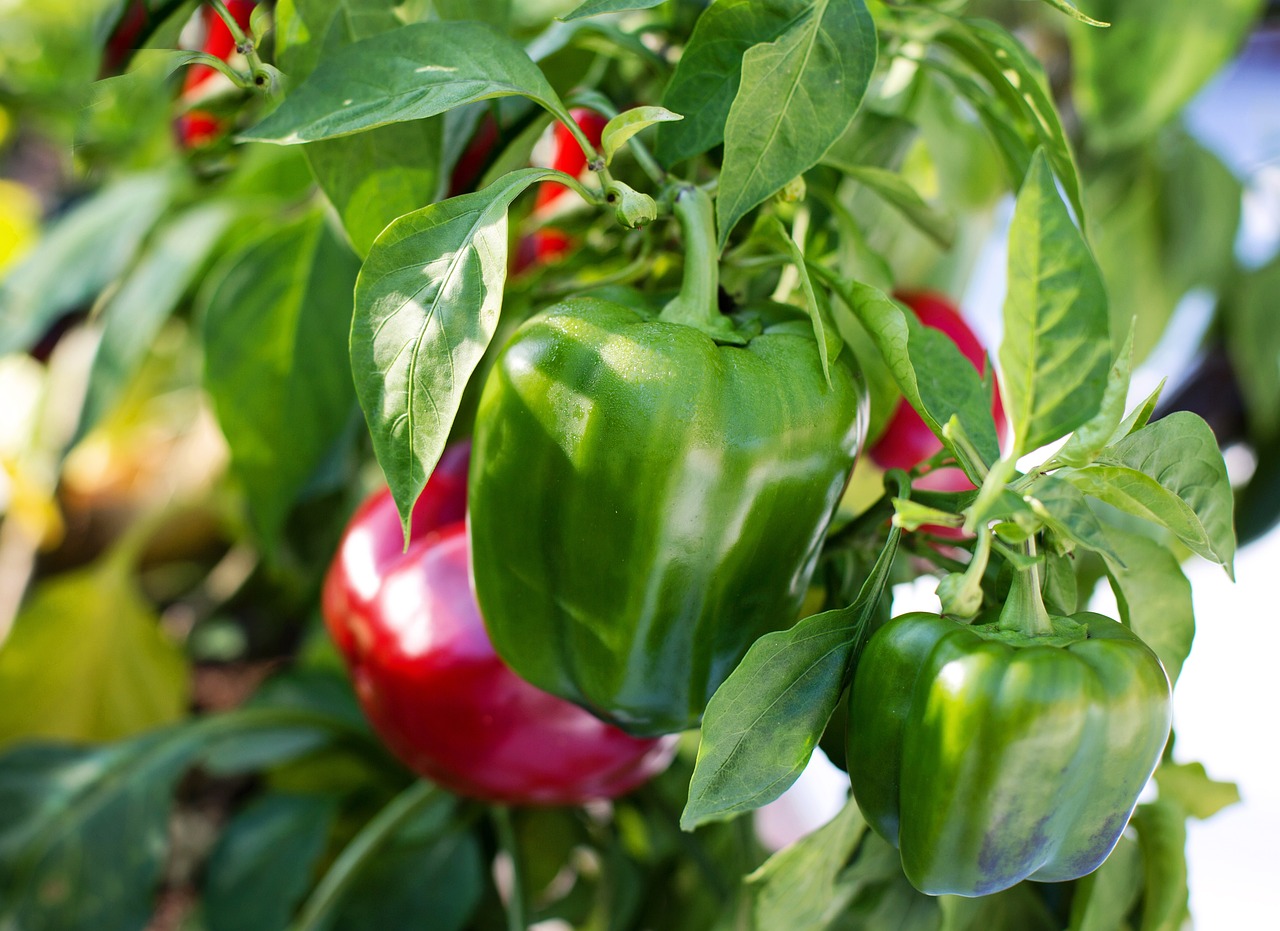Whether added to stews, curries, soups or fried preparations, okra imparts a unique taste and flavor and thickness to dishes where it is added.
Okra plants produce large, showy flowers that resemble hibiscus blooms. The flowers are often creamy yellow with a deep burgundy or maroon center, creating an attractive contrast in a garden.
Here is a complete guide on how to plant, grow and care for Okra:

Description
Okra (Abelmoschus esculentus), also known as lady’s finger or gumbo, is a warm-season vegetable that thrives in hot temperatures. It belongs to the mallow family Malvaceae and is often grown as an annual in cooler regions and as a perennial plant in warmer climates.
Okra plants have large, lobed leaves and produce hibiscus-like flowers. The pods, which are the edible part of the plant, are typically green with numerous seeds inside and can grow up to 6-8 inches in length. Okra pods can be sautéed, fried, roasted or used in numerous soups and stews.
Okra is a nutritious vegetable, rich in fiber, vitamins (such as vitamin C and vitamin K), and minerals (including potassium and magnesium). It is low in calories and fat.
| Botanical name: Abelmoschus esculentus | Propagation: Seeds |
| Common name: Okra, Lady’s finger, Gumbo | Soil type: Sandy loam |
| Family: Malvaceae | Soil pH: 6.0 to 7.0 |
| Plant type: Perennial, annual | Temperature: 200C-300C |
| Hardiness zones: USDA zones 2-11 | Light: Full sun |
| Mature size: 6-8ft. tall, 3ft. wide | Spacing: 30cm between plants |
| Flower color: Yellow, white | Pollination: Self pollination |
| Time to maturity: 60-70 days | |
| Native area: Africa |

Temperature requirements
Okra grows well during a long, warm, growing season with monthly temperature ranging between 20-300C. This results into proper growth, flowering and fruit development. Okra seeds prefer to germinate in soils that are relatively warm and will not germinate below 60C.
Soil requirements
Okra is able to grow in a wide range of soil types, but grows well in rich, well drained sandy loam soil with pH of 6.0 to 7.0. If soil pH is lower than 5.8, apply lime to increase soil pH to 6.0 or more. Soil with pH below 5.8 results into poorly developed okra pods.
Light/Sun requirements
Okra grows well in an area that receives full sun (at least 6-8 hours of sunlight per day).
When to plant Okra
Okra thrives in warm weather. Plant seeds or transplants outdoors after the last frost date in your area when the soil has warmed up. This is usually in late spring or early summer for most regions.
In tropical and subtropical regions, okra can be planted at any time of the year.
Garden preparation
Clear your garden area by clearing all existing vegetation and removing large stones.
Plough the area to a depth of 15-20cm to enhance proper root penetration of plants.
Work organic manure like compost or rotted animal manure into the soil to enhance its richness.
Planting
Okra is planted by direct seeding into the garden bed or using transplants, but direct seeding is commonly practiced.
Soak seeds overnight in water to enhance quicker and more uniform germination.
Dig holes for planting seeds that are 2-4 cm deep with spacing of 30cm between holes.
Transplants should also be planted with the same spacing.
Plant 2-3 seeds per hole, backfill with soil and water thoroughly.
When seedlings have emerged, thin plants to 2 seedlings per hole. Remove all sickly plants and those that are stunted.
How to care for Okra plants
Watering: Okra prefers consistent moisture. Water regularly, providing about 1 to 1.5 inches of water per week. Keep the soil evenly moist but not waterlogged.
Deep, infrequent watering is preferable to shallow, frequent watering.
Weeding: Weed the area around okra plants to lower competition for moisture and nutrients.
Mulching: Apply a layer of mulch around the plants to help retain soil moisture, suppress weeds, and regulate soil temperature. Mulching material can be in form of plastic mulch or dried grass.
Fertilization: Okra doesn’t require overly rich soil, but you can incorporate a balanced, all-purpose fertilizer into the soil before planting. Follow the package instructions for application rates.
Side-dress with a nitrogen-rich fertilizer when the plants are about 12 inches tall.
Support: Okra plants can grow quite tall, and their stems can become heavy with pods. Consider staking or providing other support to prevent them from bending or breaking.
Pruning: Okra plants don’t require extensive pruning. However, you can pinch back the tips to encourage bushier growth.
Ratooning: Ratooning involves cutting stems of old plants to encourage growth of new shoots and induce branching. Cut stems after harvesting, 1 ft from the ground, and side dress with a nitrogen fertilizer.
Pest and Disease Management
Watch for pests such as aphids, spider mites, and caterpillars. You can use insecticidal soap or neem oil for organic control.
Common diseases include powdery mildew and fusarium wilt. Choose disease-resistant varieties if available, provide enough spacing between plants and practice good garden hygiene.
Harvesting
Okra pods are ready for harvest when they are about 2 to 4 inches long. Harvest regularly, as the pods can become tough and fibrous if left on the plant for too long.
You can harvest by hand or use a knife or pruning shears to remove the pods from the plant, 4-7 days from flowering time.

Storage
Okra is best when consumed fresh, but you can store harvested pods in the refrigerator for a few days. Avoid washing the pods until you’re ready to use them.
Sun dried okra can be stored for up to 6 months at room temperature.




